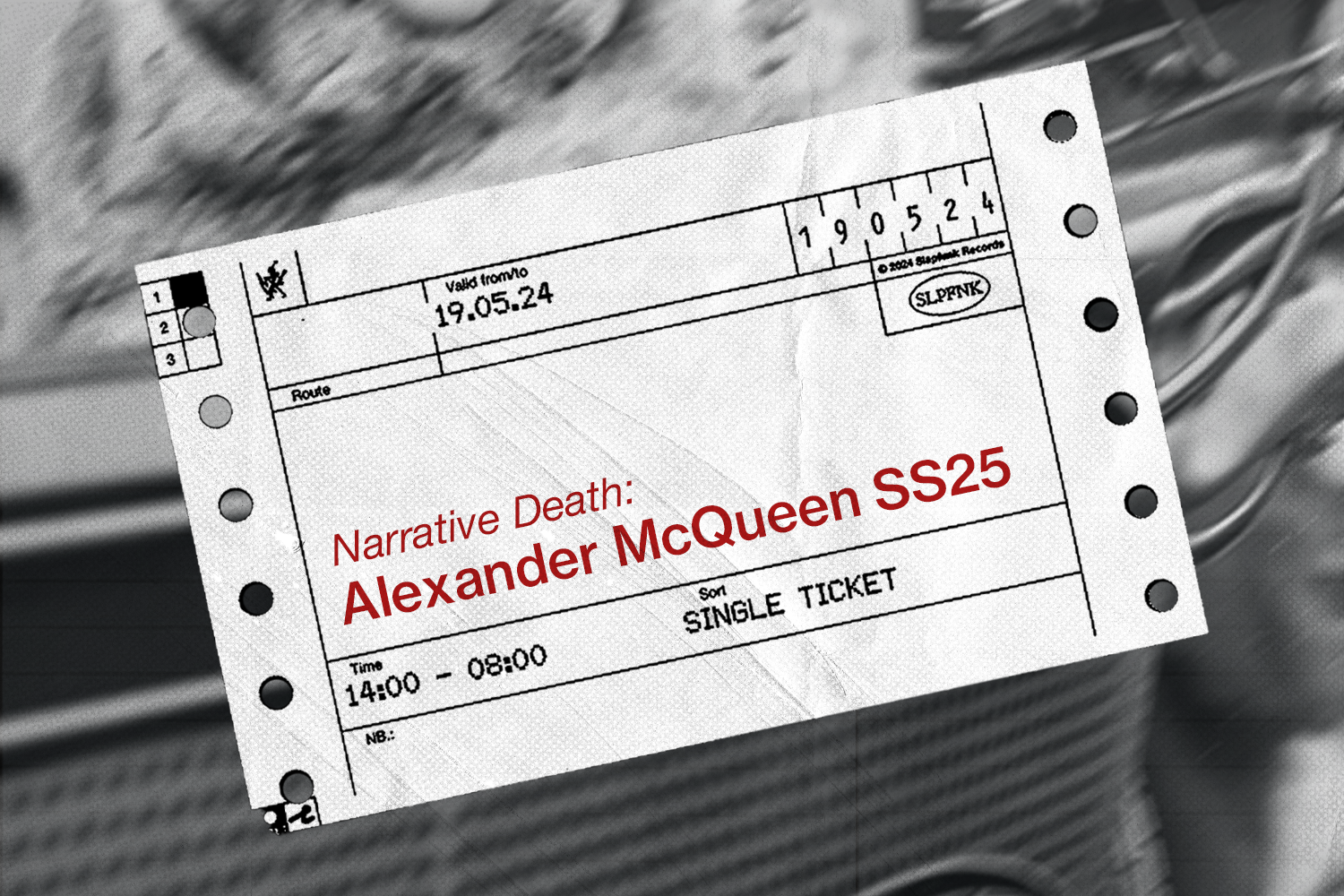On Saturday, Sept. 28, Seán McGirr unveiled his sophomore ready-to-wear collection with Alexander McQueen. 46 looks “evoking the ephemerality of the banshee,” according to a statement on the brand’s Instagram account. Models paraded quickly in single file down a long, black runway with stoney faces accentuated by kohl-like graphic eyeliner stretching to the temples. Hair was slick and shiny, accentuating the sharpness of the tailored shoulders and structured collars. The banshee has been a part of the McQueen iconography for decades; it was the theme of fall/winter 1994, one of the brand’s earliest collections. At the time, banshee was a turning point for the brand and contained the first tastes of McQueen as we knew it in its prime. However, similar to McGirr’s first collection at the house, Lee Alexander McQueen’s early works were not received well.
Unfortunately, whatever success Seán McGirr was hoping to replicate from the first banshee show fell short. Objectively, this is a good collection, but it felt disjointed, hollow, and flat. The craftsmanship and eye for detail are apparent in McGirr’s work, and he clearly cares about what he is doing, but there is no joy or passion to be found in his artistic communication. Though there are some pieces that think outside the box, none of them embody the subversiveness and twisting of the romantic aesthetic that are evident in McQueen’s 1994’s banshee.
Lee’s McQueen was the exemplification of toeing the line between the shocking and the enchanting, the dainty and the disgusting, the sexy and the unsettling. Banshee was no different and set the tone for his meteoric rise through the nineties. There are familiar silhouettes in unexpected patterns and fabrics, innovative textile incorporation, and controversial moments, most notably a bald, pregnant woman with ‘McQueen’ stenciled on her head in glittery silver walking the runway. The music was loud and operatic, with the wails of a woman over a dissonant orchestral arrangement gradually fading into thumping electronics. The show was staged in the now-closed London nightclub Cafe de Paris. Stella Artois beer posters hung around the catwalk, the backstage separated only by plastic sheeting with the word ‘DRY’ on it in massive emerald letters. In short, they did everything they could with everything they had, which wasn’t much at the time, and created something poignant and hauntingly beautiful without taking itself too seriously. Models pranced down the runway and posed coyly, licking their fingers, twirling, and miming screams. This was a show where it was obvious everyone working on it was passionate about the project. The team truly painted a picture of the banshee as a fearsome, spectral beauty. By the final bows, you are no longer afraid of the banshee; you want to be her.
Yet, Seán McGirr’s banshee had no story. This is the problem that lies at the heart of much of the criticism he’s received since taking his position as creative director. If anything, his pieces took the banshee’s folkloric description much more literally in their floaty, sheer fabrics muted moss greens, and the closing look: a crystal gown with sweeping, sparkling tendrils covering the model’s face. His more plain, lackluster design choices, however, could have been forgiven or perhaps overlooked altogether if there was a compelling narrative backing them up. Had the models and styling been more dynamic, the reception might have been more significant.
A collection should never be a handful of recognizable pieces out of a few dozen mediocre ones. There are very few garments McGirr has designed that, when isolated from supplemental brand imagery, can still be recognized as a McQueen. This lack of unity with the overall brand image with little to no explanation, whether it be a press statement or a narrative on the runway, creates a confusing and uncertain brand attitude. Consumers flock to McQueen for the idea of the McQueen woman, a fearless, powerful, bombshell party girl who embodies all the authentic qualities of womanhood, not just the pretty ones. The harnessing of the ugly and shocking for beautiful purposes is an essential pillar that McGirr’s designs lack. McQueen seems to be falling out of the very niche it created for itself, leaving no outwardly obvious place to go.
The shoes of Alexander McQueen may be the toughest to fill. Today, there are very few designers who are both as versatile and technically proficient as he was. Seán McGirr’s task is not an easy one, and the industry-wide trend of short-term, nearly seasonal, creative directors undoubtedly raises the stakes. In the nearly 15 years since Lee’s passing, the brand has grown and changed immensely, but perhaps it’s time for a return to its roots. Quality storytelling, unconventional runways, and intentionality at every turn are what will restore McQueen to its place on the cutting edge of fashion. The real question is when, or if, McGirr will rise to the challenge.
Words by Lola Barajas
Graphic by Eve Friday

